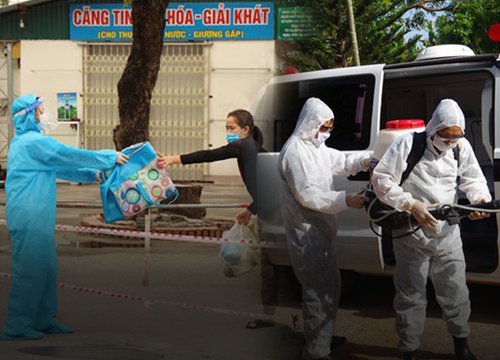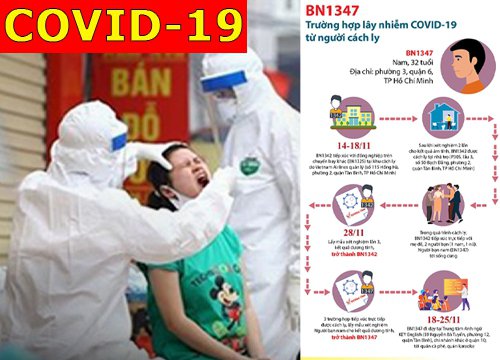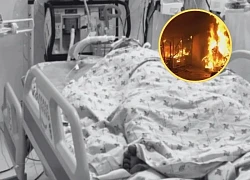Covid-19: 40 cases related to the Renaissance Mission Church, the patient was not surprised to be positive

2 | 0 Discuss | Share
Last week, the World Health Organization (WHO) declared a Public Health Emergency of International Concern (PHEIC) for monkeypox – the highest alert level of WHO. More than 20,000 infections have been detected in more than 75 countries and territories, many of which have not previously reported cases. The US currently has 4,639 cases, the highest in the world, as of 0:00 on July 29 (local time).
In Vietnam, on July 29, the Ministry of Health issued guidelines for diagnosing monkey smallpox. The guidelines specify four stages of the disease: incubation, onset, full-blown disease, and recovery. The incubation period is 6-13 days (can range from 5-21), infected people have no symptoms and are not contagious.
The onset phase is from 1-5 days with symptoms of fever, lymphadenopathy, headache, fatigue, chills, sore throat... and the disease begins to spread. The fulminant phase is characterized by the appearance of a rash on the skin, usually 1-3 days after fever, the rash tends to centrifuge, most commonly on the face, palms, soles; possibly on the mouth, eyes, genitals; progression gradually. The recovery phase is when the patient gradually disappears from the clinical symptoms, the scars on the skin can affect the aesthetics and there is no risk of infection; Symptoms may last 2 to 4 weeks and then resolve on their own.
The disease is divided into 3 types: asymptomatic, mild and severe. Mild form can resolve on its own in 2-4 weeks without specific treatment; Severe forms are common in high-risk groups (pregnant women, children, background patients, immunocompromised...), which can lead to skin, lung, brain complications, sepsis, even even death from the 2nd week of illness.
Suspected cases are cases of illness in the 21 days before symptom onset with direct contact with an infected person or through contaminated objects or cases with a suspected clinical picture. Confirmed cases are those with positive molecular biology test results for monkeypox virus.
The treatment of cases is mainly symptomatic treatment along with ensuring nutrition, water-electrolyte balance and psychological support. Specific treatment drugs are used in severe cases or high-risk subjects. The patient is discharged from the hospital when he has been isolated for at least 14 days and has no clinical symptoms.
Monkeypox was first identified in humans in 1970 in the Democratic Republic of the Congo in a 9-year-old boy in an area that had eradicated smallpox (Smallpox) in 1968. Since then, most Cases are reported from the rural, rainforest areas of the Congo Basin, especially in the Democratic Republic of the Congo, and human cases are increasingly being reported from across Central and West Africa. Until now, European countries and the US are also suffering waves of this disease.
-
Monkeypox can be transmitted from animals through bodily fluids, including large respiratory droplets or contact with secretions from wounds.
Monkeypox is transmitted from sick people to healthy people is thought to occur mainly through large respiratory droplets during prolonged face-to-face contact. In people living with a person with monkeypox, the transmission rate is about 50%. Most of the cases are children.
Therefore, it can be said that anyone who has close contact with a person with symptoms of monkeypox, or with an infected animal is at high risk of infection. People who have been vaccinated against smallpox are more likely to have some degree of protection against monkeypox infection.
Now WHO and countries are working to better understand the extent and causes of monkeypox outbreaks. This virus is endemic in certain animal populations in several countries, leading to occasional outbreaks of disease among locals and tourists.
Smallpox in monkeys spreads, so WHO encourages people to update information from reliable sources, such as national health authorities (Ministry of Health), official information sources..., about the extent of the disease. community outbreak (if any), symptoms and prevention.
Because monkeypox is spread through close contact, it does not discriminate against those who are sick. It can be a barrier to ending an outbreak, but it can also prevent people from seeking care and lead to undetected spread.
WARNING: The monkeypox virus may have been spreading silently!  Hoàng Anh12:02:53 07/06/2022For the first time in history, the world faced an international outbreak of monkeypox. The World Health Organization (WHO) said that between May 13 and June 2, health authorities recorded 780 cases of monkeypox in 27 countries where the disease is not endemic. It is important to...
Hoàng Anh12:02:53 07/06/2022For the first time in history, the world faced an international outbreak of monkeypox. The World Health Organization (WHO) said that between May 13 and June 2, health authorities recorded 780 cases of monkeypox in 27 countries where the disease is not endemic. It is important to...

2 | 0 Discuss | Share

4 | 0 Discuss | Share

4 | 0 Discuss | Share

2 | 0 Discuss | Share

1 | 0 Discuss | Share

3 | 0 Discuss | Share

3 | 0 Discuss | Share

5 | 0 Discuss | Share

2 | 0 Discuss | Share

4 | 0 Discuss | Share

4 | 0 Discuss | Share

4 | 0 Discuss | Share





4 | 0 Discuss | Report